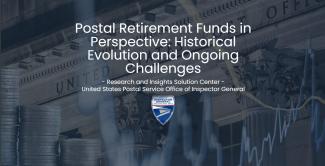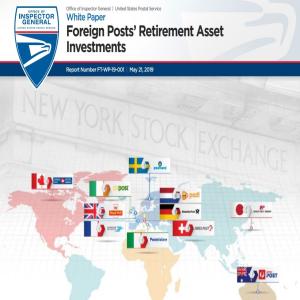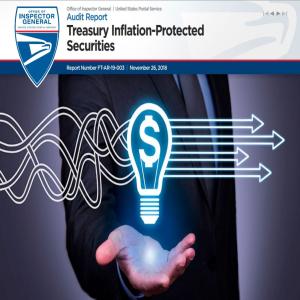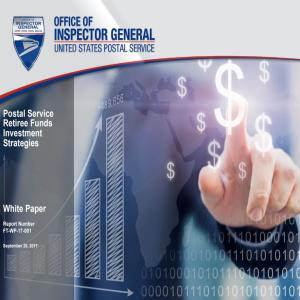Postal Retirement Funds in Perspective: Historical Evolution and Ongoing Challenges
- Retirement-related costs were 11.7 percent of operating expenses in FY 2023, a significant cost for the Postal Service.
- USPS has higher retirement liabilities than other agencies and must pay these costs through revenue rather than through congressional appropriations. The Postal Service has no control over levers that might decrease costs or generate higher fund balances.
- Recent high inflation had several impacts on USPS’s retirement funds, including a significant increase in amortization payments and higher-than-average cost-of-living adjustments for retirees.
- The Postal Service Retiree Health Benefits Fund is expected to be depleted in FY 2031. At that time, retirement-related costs will increase dramatically. Retirement costs are expected to be nearly $18 billion in FY 2032.
- Increasing retirement costs can divert money away from necessary capital investments, such as improvements to the retail and delivery network.
Since the formation of the modern Postal Service in 1971, various laws gave it more retirement liability than other federal agencies. As an independent agency within the federal government, USPS is expected to be self-sustaining and cover costs — including retirement costs — through revenue. Thus, while other federal agencies receive annual congressional appropriations to fund retiree pension and health care benefits, the Postal Service generally receives no direct tax dollars and pays for these expenses from the sale of postal products and services. USPS’s retirement costs are significant — $10 billion in FY 2023 alone.
For employees who worked for both the Post Office Department (the cabinet-level agency that existed until 1971) and the Postal Service, USPS shares retirement obligations with the federal government. However, the allocation methodology used by the Office of Personnel Management (OPM) places a disproportionate share of CSRS liability on the Postal Service. Prior OIG work estimated USPS’s CSRS balance would be $80 to $111 billion larger using an alternative allocation methodology. As part of its Delivering for America plan, the Postal Service is seeking administrative action to correct its CSRS overpayment.
Recent high inflation impacted USPS’s retirement funds in several ways. First, the rate of inflation exceeded the interest rate on the funds, resulting in a negative real return on investment. Second, high inflation led to higher-than-average cost-of-living adjustments for retirees. Finally, inflation resulted in significant increases to CSRS and FERS amortization payments.
Currently, USPS does not have any annual costs related to retiree health care. The Postal Service Retiree Health Benefits Fund (PSRHBF) is expected to be depleted in FY 2031. When the fund is depleted, the Postal Service will need to pay retiree health premiums directly from annual revenue. Total retirement-related costs are expected to grow to nearly $18 billion by FY 2032, due in large part to the depletion of the PSRHBF.
Rising retirement costs can divert money away from capital investments, such as improvements to the Postal Service’s vast retail and delivery network. Increasing retirement costs may also result in higher rate increases for both competitive and market dominant products. Stakeholders and policymakers should consider potential strategies to mitigate future costs, such as diversification of retirement investments and CSRS reform.
Joy Sanzone, David Neu, and John Althen contributed to this report.










